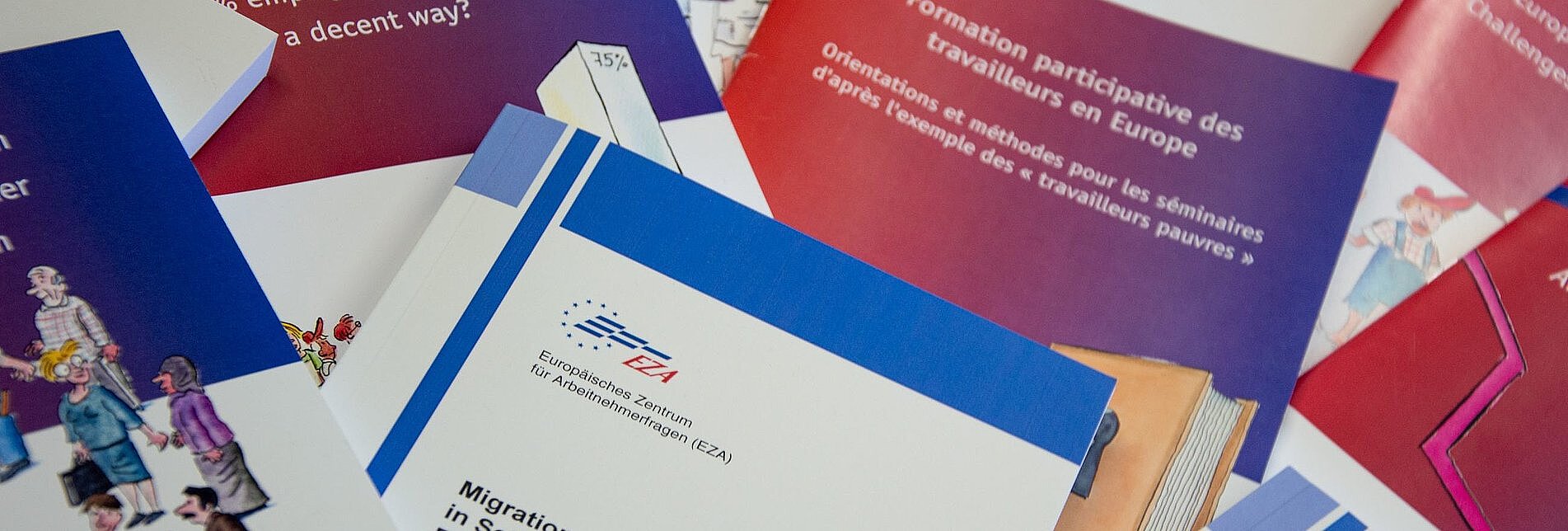From 02 – 04 October 2018 the World Organization of Workers (WOW) in cooperation with the European Centre for Workers’ Questions (EZA) and supported by the European Union organized a seminar titled “Equality on the labour-market: the position and role of women”. The seminar took place in Leiden, the Netherlands. It was part of the EZA project co-ordination about “Quality of work”.
The strive for an equal position of women on the labour-market in comparison to the position of men has been heavily debated for numerous years. One can surely remember the heavy debates concerning a quota for women in top-positions, This debate resulted in a discussion that eventually was more about the traits of women (less ambitious; not daring to stand up for themselves; having doubts as to whether one would be able to fulfil the responsibilities of the function), than about a more equal treatment of women (which was the actual reason for coming with the proposal to have quotas).
Since then things have changed, but still women are not equally remunerated for the same job. This may be considered a strange phenomenon since the academic performance of women has been, for some years now, better than that of men. So why does this not show on the labour-market?
Iceland found a new approach this as was presented by Ms. Magnea Marinósdóttir, Senior Advisor, Equality Unit, Ministry of Welfare (Iceland). Earlier this year Iceland became the first country in the world to make companies prove they are not paying women less than men for the same work. This is a huge step to more equality. Iceland, and for that matter Scandinavia, has always been on the forefront when it comes to Legislation on Gender Equality and Equal Pay. But even there, real equality never existed. There was still inequality in pay. Their solution: The Law on the Equal Pay Certification. This law was introduced by a bill of law in June 2017 through amendments to the Gender Equality Act No. 10/2008. Article 19 of this law states: ‘Women and men, working for the same employer, shall be paid equal salaries and enjoy equal terms of employment, for the same jobs or jobs of equal value’. It entered into force on January 1st 2018.
Through this amendment and through the use of the Equal Pay Standard which defines which jobs are of the same value equal pay is to be guaranteed. The Equal Pay Standard is a classification system. What the system does is to compare jobs concerning certain criteria whereby it makes comparison possible. Since its introduction it has proven its working. It does, however, not require the same uniformed pay system for all companies and institutions. And it does not require to pay everyone serving in a job of same or equal value the same. So although the system still is not covering everything it has been welcomed by many people who deem it fair.
The presentation was followed by a contribution of Ms. Maga Manuela Vollmann, President of the board, Manager and Founder of ABZ*AUSTRIA, social business for equal opportunities of women in
Austria (Austria) titled ‘Gender Equality in the New World of Work – Current Status & Future Prospects’. Women still lag behind when it comes to their wages. In Europe women earn 16.2% less than men. In Austria this is even more (20.1%). 4 out of 10 hours they work are unpaid. And women are underrepresented in leadership-positions. Diversity, however, begins at the top.
Some decades ago there was a call for more part-time work in Austria. This resulted in many, and mostly, women working part-time. Ms. Vollmann stated that ‘It was never the plan for part-time work becoming feminine’.
Proposals for changing the labour-market were e.g. leading in part-time; top job sharing; changes in recruiting; support of women’s network; voluntary quotes etc. The World of Work 4.0 demands new skills and competences. Also it will demand flexibility in working arrangements. And women should be an intrinsic part of the decision-making process.
Ms. Francesca Sanders, Associate Consultant, SEEK Development Strategic and Organizational Consultants GmbH (Germany) confirmed the still existing gender segregation in the labour market, but also stressed why economic policy affects men and women differently. In her contribution (How does austerity effect gender equality in the labour market? A case study of Ireland and Spain during the Euro crisis) she stated that women are primary caregivers for children and the elderly and dominate caring occupations such as nursing, healthcare, teaching and cleaning. Meaning that cuts in spending in the public sector will immediately have effect on women more than men. However, during the crisis more men were affected because the industries they worked in were severed the biggest blows (construction, transport, mining, industries).
When comparing both Ireland and Spain it can be seen that, although the countries are quite different, the austerity measures were in both cases quite gender-biased. Generally affecting women more so than men. National policies nuanced to what extent this was the case, but statistics clearly show that those losing out were predominantly women active in the public sector.
On a more positive note, CNV Vakmensen presented their initiatives to introduce more women to the work of trade union through network meetings they have been organising. These meetings have been very successful according to Ms. Sandra Hendriks-Sneijder, CNV Vakmensen (Netherlands). Through organizing events for women and being present at events which mostly attract women CNV Vakmensen is trying to incorporate more women in their work. Women should be approached in a different manner then men and by doing so the activities by CNV Vakmensen have been very successful.
The Position and Role of Women in Construction, Health Care and CLAC Internal in Canada are very different too. Canada has the 8th highest gender pay gap out of list of 43 countries examined by OECD (2016). Not necessarily a good position for a country where its prime-minister was applauded for his Gender-Equal Cabinet. Canada has experienced a skilled trades shortage, while on the other hand there are approximately 6.2 million women in Canada between the ages of 20 – 44 years old. However, there are a number of barriers to participation of which the perception by men and women that construction is men’s work and issues of respect, such as, stereotyping, chauvinism and discrimination are probably most determining. The goal is now to create awareness and shift the attitudes and culture in order to increase female participation in sectors where women traditionally not have been very active in. And to create specific platforms for women. Pay Equity Legislation (legislation that requires employers to identify and correct gender discrimination) is another solution. Closing the wage gap benefits families, businesses and the economy at large.
There are opportunities here for unions too such as:
- Reinitiate pay equity advocacy
- Rename the issues
- Educate on issues and solutions
And this should be done internally too since the there is still no balance between men and women in leadership-positions in the unions themselves.
The final speaker, Drs. Ans Merens, Scientific Researcher Gender-research, Netherlands Institute for Social Research – SCP (Netherlands) presented the topic: ‘Women and men on the labour market: the case of the Netherlands’. Today girls perform better than men in education. As a result: in population 25-45 years women higher educated than men (45-65 years: men slightly higher than women). Most women work part time (despite being a mother or not). The Netherlands is: “champion part-time work” with 73% of women working part-time. There is a long history of part-time work in Netherlands, but research shows that part-time work is not always a free choice. And this results in economic dependence. Unfortunately, this dependence of women has grown over the years. Despite all of this we see that gender equality on the labour market has increased in many respects. The process, however, is very slow.
Apart from the key-note speakers’ country-cases were presented by representatives of Denmark, Serbia and Germany. Very different countries with a very different approach to women working. It was interesting to hear that the pay-gap has tremendous effects since women automatically have less money for everything in life, for themselves, their families and eg private pensions. Particularly the issue of pensions is problematic. Certainly, also in relation to divorce, leaving many women struggling financially. This should and can be avoided.
Two other items in the program were more informal and active. Through the form of questions, the participants were asked about some statistics and historical information about working women. The questions showed the successes and achievements of women. And there have been many.
The final part of the seminar was a plenary discussion on the role of unions with respect to the position of women and what the actions will be in the next years. A number of representatives were very enthusiastic about the Icelandic system. They also were very enthusiastic about the practical connection to women on the labour-market through informal meetings and get-togethers. Overall the participants shared the opinion that more should be done for the benefit of women. Achieving an equal position will not be achieved from one day to the next, but initiatives should be taken to speed up the process.
After the seminar a section of the female participants shortly met in the WOW Women’s Committee to discuss the plans and initiatives for the coming years.
One of the main findings from the seminar was that women should have an option to work, be that part-time or full time. Today many do not really have this option. They are either forced to work part-time (even when they would like to work more) or are negatively spoken about when working full time (certainly in the case of having children). In the end many women will still prefer to work part-time, but this should then be their choice. It should be an option. And it should not be decided by others.
Positive is that there is more equality than before. But there is still quite a long way to go to achieve full equality. In pay, but maybe more so in the mind and perception of people.

